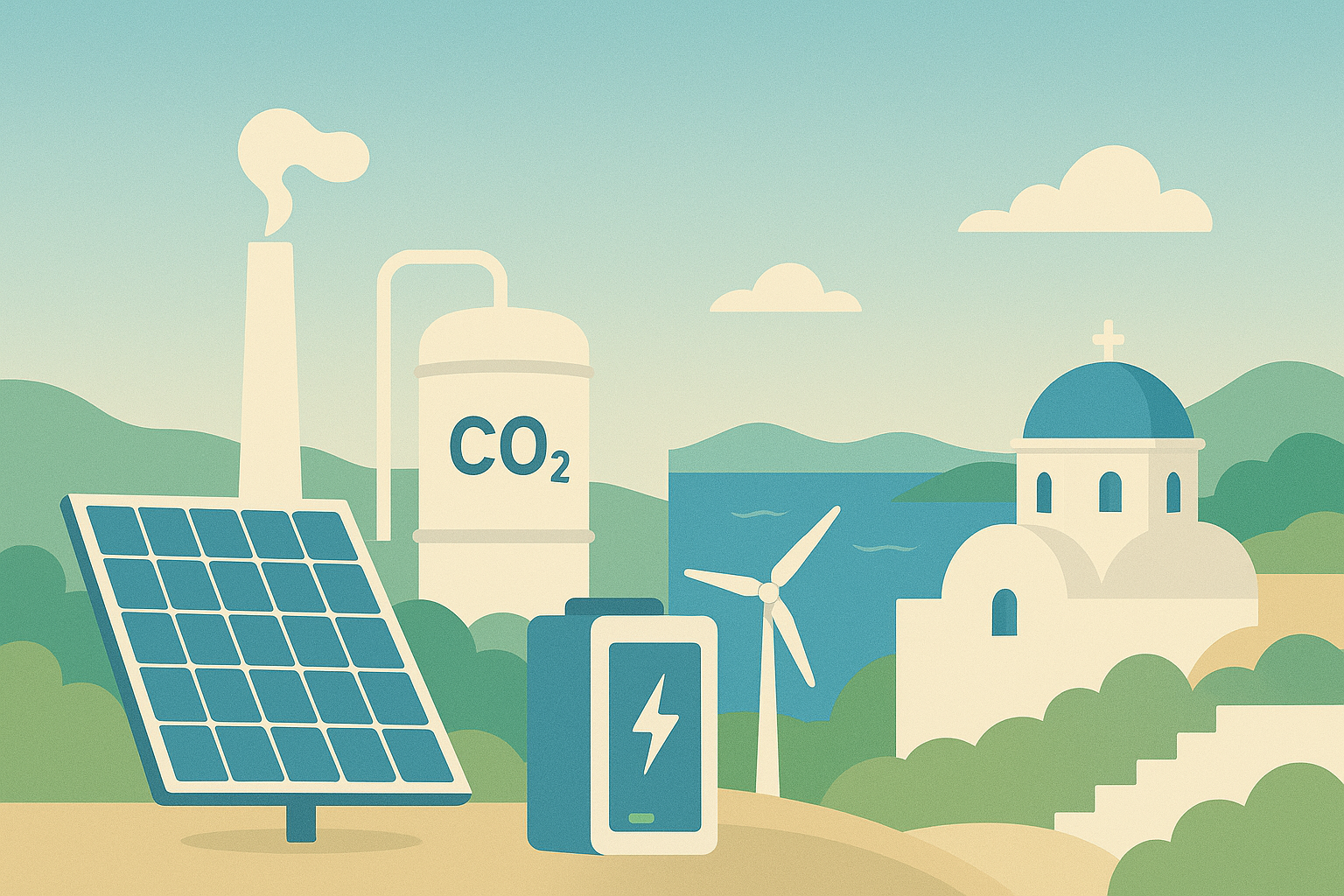
Newsroom / Center News
From Northern Lights to the Aegean: Greece’s Path in Carbon Management and Energy Storage
In 2024, Europe reached a symbolic turning point with the inauguration of Northern Lights in Norway, the world’s first open-access, cross-border CO₂ transport and storage project. For decades, carbon capture and storage (CCS) had been discussed as a distant technology, a solution on the horizon. Northern Lights changed the narrative. By collecting emissions from industrial facilities, transporting them by ship, and permanently storing them in geological formations beneath the seabed, it provided a tangible demonstration that carbon can be managed as securely as any other industrial by-product.
This Norwegian milestone resonates across Europe, particularly in regions such as Greece, which is beginning to translate climate ambitions into infrastructure, legislation, and financial mechanisms. The lesson from Northern Lights is clear: decarbonization cannot rely solely on renewables. It also requires carbon management, large-scale storage, and policies that preserve both industrial competitiveness and social equity.
The European Union’s climate policy is anchored in the EU Emissions Trading System (EU ETS), the world’s largest carbon market. In 2018, carbon allowances cost less than €20 per tonne. By 2021, they surged past €50, and by 2022 they touched €90. After a period of volatility, prices stabilized in 2024–2025 around €65–70, with analysts projecting a new upward cycle as the supply of allowances shrinks and the Carbon Border Adjustment Mechanism (CBAM) is phased in. Forecasts suggest average prices will climb close to €90 in 2026 and could exceed €100 by 2027.

These price signals matter. They are the invisible architecture guiding investment decisions across Europe. For cement, steel, and refining industries, the rising cost of emissions means that capturing and storing carbon is no longer a theoretical option but an economic necessity.
The global emissions picture between 2023 and 2024 underlines this urgency. While China, India, and Indonesia recorded sharp increases in coal-related CO₂ emissions, Europe moved in the opposite direction. Coal combustion contracted across the continent, oil demand declined, and natural gas use plateaued. The data confirm a rare decoupling: the European economy continues to expand while its carbon footprint shrinks.

Greece is embedded in this continental trend. As part of the EU, its industries are already subject to the ETS price signals, and its energy system is being shaped by the broader decline in fossil fuel dependency. Yet Greece’s transition carries its own national dynamics, anchored in geography, policy, and the urgent need to balance affordability with climate goals.
In early 2025, the Ministry of Environment and Energy, together with ADMIE, introduced legislation granting flexible connection terms for CCS installations. This regulatory move, though seemingly narrow, is decisive: it allows capture projects to plug into the grid under predictable rules, removing one of the obstacles that has slowed development. The flagship venture is the transformation of the Prinos offshore basin in the northern Aegean. Once a declining oil field, Prinos is being reimagined as a CO₂ storage hub, backed by €150 million in state support. With milestones set for completion, the project could anchor Greece’s role as a regional center for carbon management, offering storage capacity not only to domestic emitters but potentially to neighboring industries across Southeastern Europe.
However, capture and storage alone cannot balance a system that relies heavily on renewable energy. That’s where Greece’s investments in energy storage come into play. Pumped hydro facilities, making use of the country’s rugged terrain, already offer large-scale flexibility. In addition, a new wave of battery parks is planned, backed by a 4.7 GW program that grants priority access to the grid. Notably, there is a regulatory effort to classify projects into groups based on technical similarity. Subsidized batteries and purely commercial ventures are being evaluated under consistent standards, which improves comparability and supports their integration with the national grid.
Battery economics are also evolving globally, with costs declining and energy density improving. In Greece, however, the storage market is still at an early stage, with the first utility-scale battery projects only now being deployed. For the moment, subsidies remain essential to kick-start investment, but over time merchant projects are expected to complement supported schemes. What emerges is a picture of a country moving from aspiration to execution. Greece is legislating for CCS, subsidizing its first storage site, regulating its battery market with unusual precision, and protecting consumers with smart tariffs. These steps situate the country not on the periphery but at the center of Europe’s evolving decarbonization framework.
All technologies will play a role in greening industry, and while this is only the beginning of the journey toward climate neutrality by 2050, success will depend on a combination of solutions rather than a single pathway.



